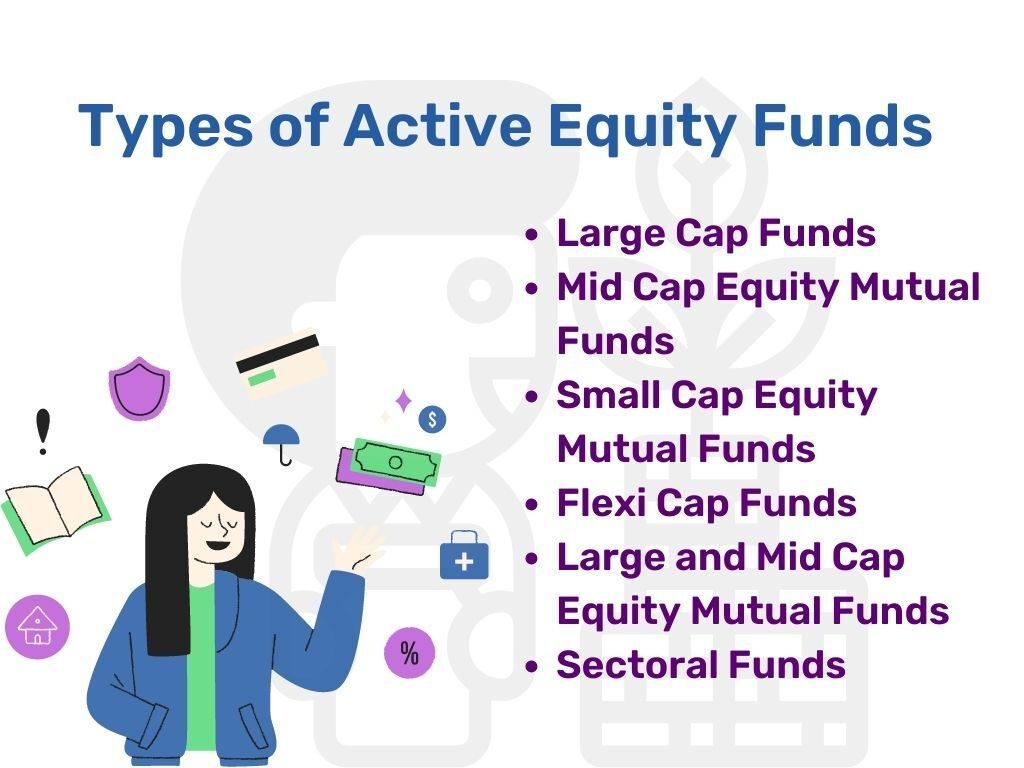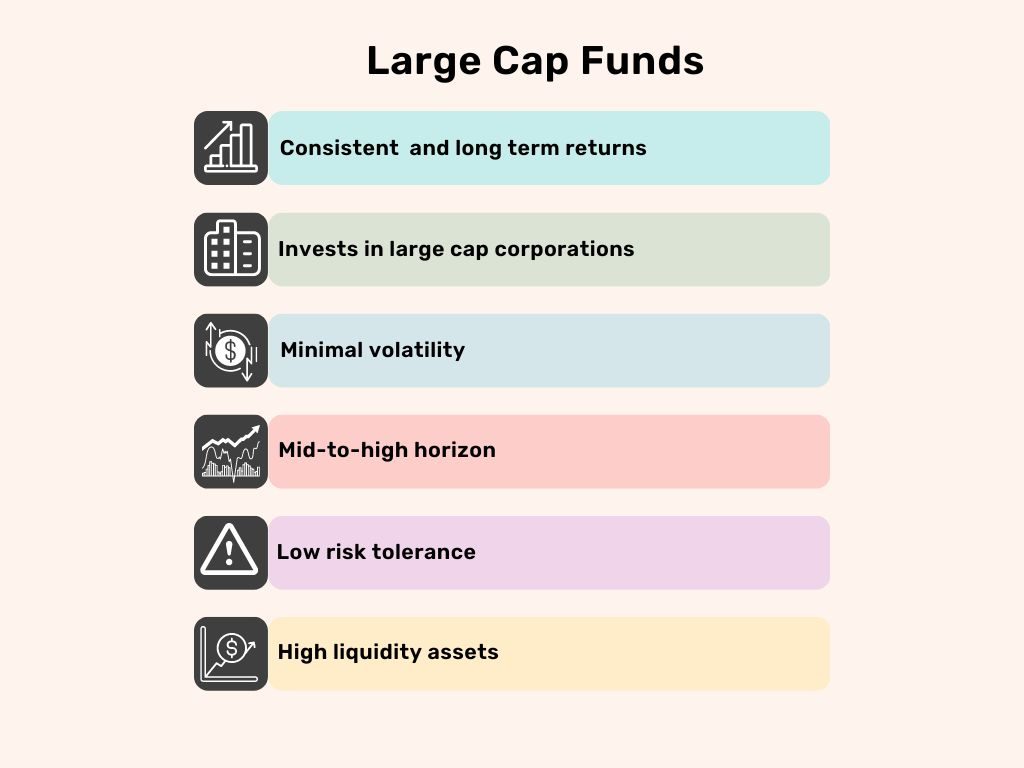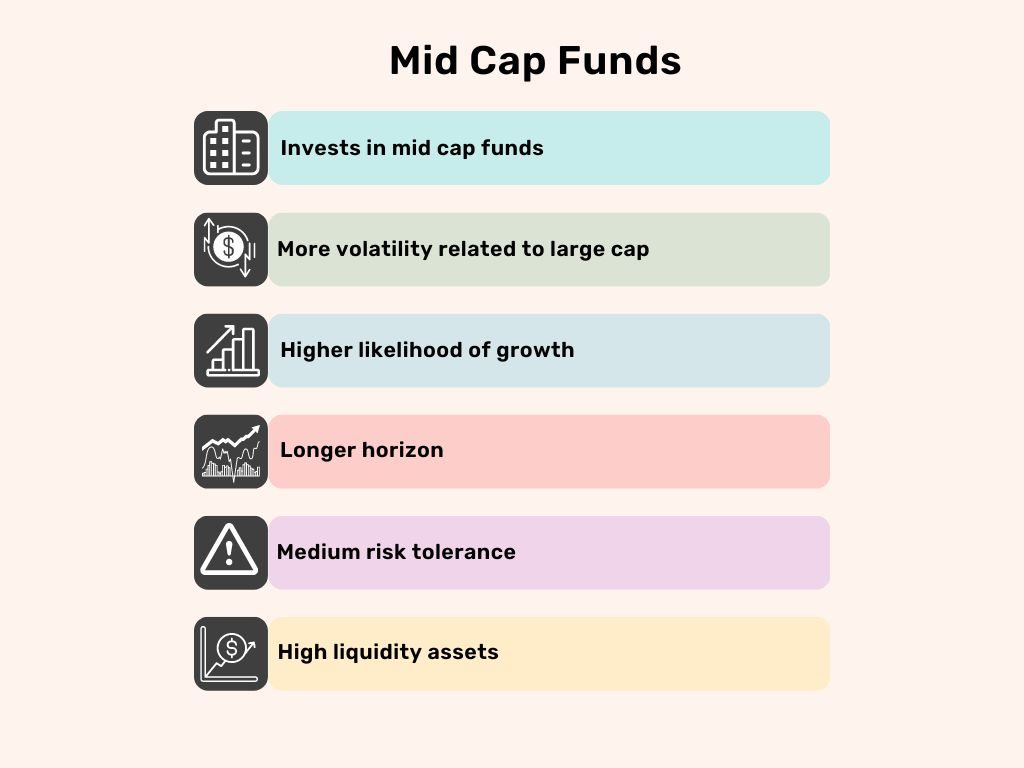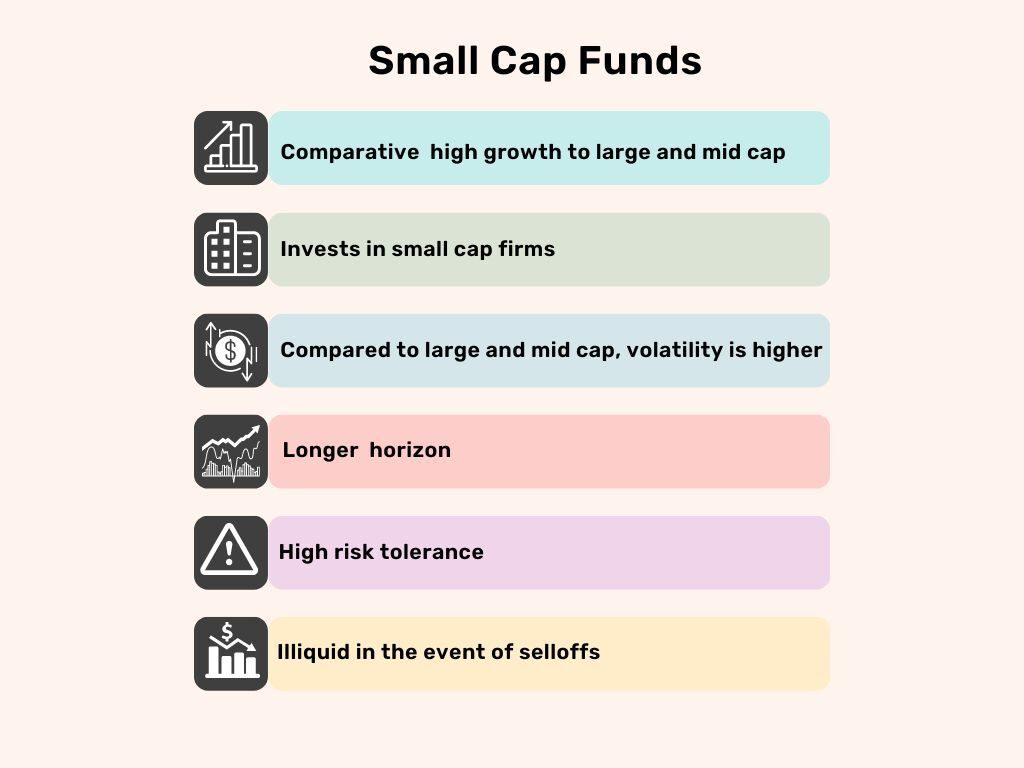If you’re looking for a way to invest in the stock market without having to pick individual stocks, equity mutual funds could be a great option.
However, with so many different funds available, it can be difficult to know where to start. In this guide, we’ll take a closer look at the various types of equity mutual funds and their suitability for different investment goals.
What are equity mutual funds?
First, let’s define what we mean by equity mutual funds.
According to SEBI Mutual Fund categorization, equity mutual funds are required to invest a minimum of 65% of their total assets in equity or equity-related instruments. This means that these funds are primarily invested in stocks or other equity instruments.
Types of equity mutual funds
Now let’s take a closer look at the different types of equity mutual funds.

1. Large-cap Funds: As per SEBI guidelines, these funds invest in companies ranked 1-100 in market capitalization. They are considered stable equity investments and experience less market volatility.
These funds are suitable for individuals seeking equity investments with lower portfolio risk.

2. Mid-cap Funds: These funds invest in companies ranked 101-250 in market cap. They are riskier than large-cap funds but offer higher return potential.
They are suitable for those with a higher risk profile and who prefer to stay invested for at least 5-7 years.

3. Small-cap Funds: These funds invest in companies below the top 250 in terms of market cap. They are considered the riskiest form of equity investment due to their high volatility.
They are suitable for long-term investors with a minimum time horizon of 10-15 years.

4. Flexi-cap Funds: These funds invest in stocks of small, mid, and large-cap companies. Portfolio diversification controls risk to an extent. However, they are still riskier than large-cap funds.
They are suitable for someone looking for equity investments with less risk in the portfolio.
5. Large- and Mid-Cap Equity Mutual Funds: These funds equally divide equity allocation between mid- and large-cap funds (35% allocation to each category). They have a higher risk than large-cap funds but lower than mid-cap funds.
They are suitable for those wanting large-cap type volatility with higher returns.
6. Sectoral Funds: These funds invest in specific sectors like Banking, Auto or Pharma. They are highly risky as entry and exit need to be timed properly and thus are not generally suitable for retail investors.
They are suitable for individuals with a high-risk appetite wanting to play different sectors.
Approaching investing in equity mutual funds
For those who are younger (25-40 years old), a mixture of flexi-cap, small-cap, and mid-cap funds is generally recommended, depending on one’s risk profile. However, for those who are approaching retirement or have already retired, volatility needs to be controlled. Therefore, it might be prudent to stick to safer options such as large-cap funds.
Conclusion
Equity mutual funds are a great way to invest in the stock market without having to pick individual stocks. However, it’s important to choose the right type of fund for your investment goals and risk profile.
We hope this guide has helped you understand the different types of equity mutual funds and how they are structured.
Remember to always do your own research and consult a financial advisor before making any investment decisions.
Comments